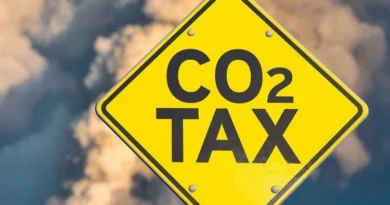Kenya reveals $600b financing gap for energy transition

Kenya says that it needs $600 billion in capital investments to achieve Net Zero, with 90% of the investment going to the power and transport sectors.
The country has already made major strides towards the energy transition, with more than 85% of power supplied to its national power grid generated from renewable energy resources. However, biomass, which is a dirty energy source, remains the largest energy source in Kenya and is estimated to serve 94.7% of the country’s energy needs. This is primarily through the use of firewood for cooking, especially by millions of rural households.
What this means is that the shift to net zero will primarily hinge on whether the country can shift its population from using firewood for cooking to adopting clean cooking methods such as electricity generated from clean sources. Other sources such as Liquefied Petroleum Gas (LPG), bioethanol and biogas will also play a pivotal role in this transition.
The East African country says that without further action, its emissions from the energy sector could rise from around 20 Mt CO2 e in 2021 to around 130 Mt in 2050. Under Business As Usual (BAU), the bulk of emissions growth will come from transport and industries, driven by population growth, GDP per capita growth, energy access and economic growth.
Kenya says that while the capital markets will provide the largest funding pool to achieve the intended target, tapping these sources will require some derisking interventions. This was revealed by the Ministry of Energy and Petroleum in the Kenya Energy Transition and Investment Plan 2023-2050.
Kenya would need around $600 billion in capital investment ($165 billion more than under BAU), with the majority of investment going to the power and transport sectors. Delivering this investment could drive new economic activity in the energy sector and beyond, potentially supporting an additional 500,000 net new jobs by 2050 and beyond
ministry of energy and petroleum
The Kenyan government is predicting the country’s population to grow 1.7 times at a compounded annual growth rate (CAGR) of 1.5% while its GDP per capita is estimated to grow 4.4 times at a 4% CAGR.
Under the BAU scenario, the growth in demand from the higher population will increase CO2 emissions five times by 2050. In this scenario, car travel will grow 15 times, demand for electricity from residential homes will increase four times while there will be a significant expansion of the manufacturing base.
The strategy shows that using the current government policies of using low-carbon technologies, emissions will grow four times. Further, emissions will be reduced through 80% renewables in the power mix and 100% electric vehicles sales by 2050. Remaining emissions will be driven by rise of gas in the power; continued use of diesel trucks in transport and limited industry decarbonization.
The investment in the energy transition is also estimated to create 500,000 new jobs, with the transport sector tipped to support the majority of the new jobs. The investment directly supports around 100,000 jobs in the construction (25%) and maintenance (75%) of electric vehicle charging and hydrogen fueling infrastructure, as well as 5,000 indirect and 12,000 induced jobs in the supply chain and wider economy.
Further, power sector investment also supports a significant number of additional jobs. The investment directly supports 178,000 jobs in the construction of renewable generation assets as well as 57,000 indirect and 130,000 induced jobs.
brian@theenergyreview.com
Discover more from THE ENERGY REVIEW
Subscribe to get the latest posts sent to your email.


